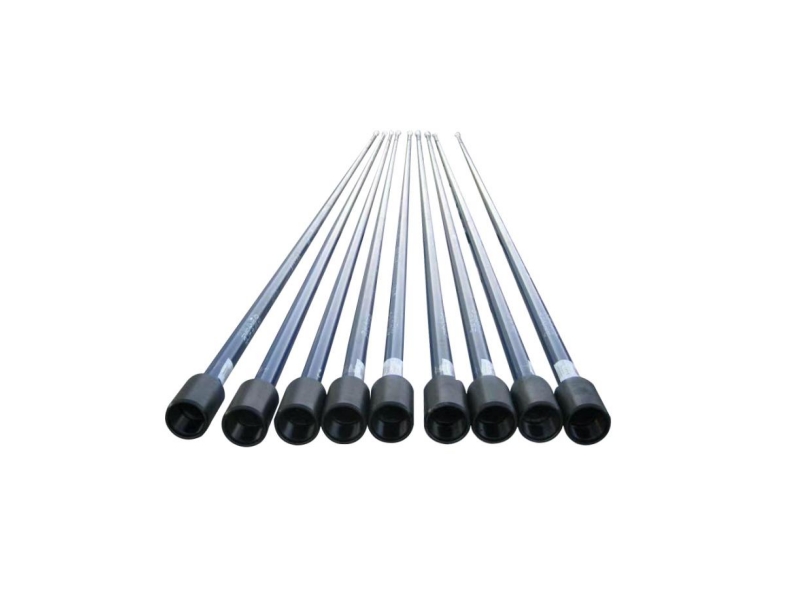In actual oilfield operations, sucker rod pumps, as transmission components of rod pump oil production, often bear high-frequency and alternating mechanical loads. During maintenance and overhaul, we often encounter different types of sucker rod pump failure problems. Combining field data and previous cases, here are several common failure modes and their possible causes for reference by peers.
From an engineering perspective, once a product can no longer meet its design functions, it can be considered a failure. For sucker rod pumps, the most typical failure forms include two categories: fracture and tripping. Among them, fatigue fracture is the most common and most difficult form to prevent, and usually occurs without obvious warning. The factors affecting fatigue can be summarized into four aspects, namely material properties, loads, shape and size of components, and working environment.
Force analysis of sucker rod pump:
(1) During operation, the sucker rod pump column reciprocates up and down in the oil pipe. When moving upward, the entire rod column is subjected to tensile stress, but the stress distribution gradually increases from top to bottom. When moving downward by its own weight, compressive stress appears in the lower part of the rod column, and tensile stress still exists above the neutral point of the rod column, but the tensile stress at this time is much smaller than the tensile stress during the upward stroke. Therefore, when the sucker rod pump column is working, the upper rod column is subjected to pulsating stress, while the lower rod column is mainly subjected to alternating stress.
(2) When the oil is thick, the pump diameter is large, and the downward speed is fast, the downward resistance will be very large, and the deadweight of a very long sucker rod pump column is required to overcome this resistance. Under the action of its own weight, the slender sucker rod pump will bend many times, making the working conditions of this part of the sucker rod pump worse, and it may be the first to be fatigued during operation. In addition, when the rod column moves up and down, it will also generate friction resistance with the oil pipe wall.

Main factors affecting the fatigue life of sucker rod pump:
(1) Influence of steel quality: including chemical composition, smelting quality, rolling quality, etc.
(2) Influence of manufacturing quality: mainly including the influence of forging, heat treatment and dry head machining quality.
(3) Influence of load: the influence of stress level and stress amplitude on each section of sucker rod pump.
Influence of corrosive medium: corrosion in pumping wells mainly includes oxygen, hydrogen sulfide, (4) carbon dioxide and microbial corrosion
Causes of failure:
1. Causes of fracture of sucker rod pump external threaded joint.
1) Excessive or insufficient preload;
2) Material defects or heat treatment quality does not meet the requirements;
3) Poor thread processing quality;
4) The side of the shoulder is not in close contact with the end face of the coupling, and well fluid flows into it, causing corrosion:
5) Overload of pumping load.
2. Causes of fracture in the square diameter area of the wrench:
1) Caused by forging defects, mainly folding and cracking;
2) The excessive rounding at both ends of the square diameter of the wrench is too small, causing stress concentration;
3) Mechanical damage.
3. Causes of fracture in heat-affected zone:
1) Coarse grains and residual tensile stress on the surface;
2) There are indentations or local diameter reduction on the rod in the heat-affected zone after forging;
3) The forging heating temperature is too high, resulting in overheated tissue!
4. Causes of fracture in rod body:
1) Bending caused by manufacturing, transportation and storage processes;
2) Bending of the rod body caused by use;
3) Material defects or heat treatment quality does not meet the requirements;
4) Surface scratches and pits cause stress concentration;
5) Unreasonable sucker rod pump column design;
6) Corrosion.
5. Causes of sucker rod pump joint disengagement:
1) The verticality of the side of the sucker rod pump shoulder and the end face of the coupling does not meet the requirements:
2) Insufficient preload;
3) The sucker rod pump external thread joint and coupling are not cleaned before assembly
4) The selected thread lubricant is not suitable
5) The impact load of liquid impact and impact pump,
6) The torsion swing of the suspension rope,
7) The vibration of the pumping system;
8) The lower part of the sucker rod pump column is bent.
6. Causes of coupling breakage:
1) Friction between the coupling and the oil pipe;
2) Insufficient preload;
3) Material defects or heat treatment quality does not meet the requirements;
4) Surface scratches and pits cause stress concentration;
5) The shape of the internal thread bottom is not good, causing stress concentration;
6) Corrosion.
We do these failure analyses not simply to "find the cause", but hope to continuously improve the rod column selection suggestions, production process flow and customer use plans through each on-site feedback.
If you encounter similar problems during use, please contact our technical team. We not only provide sucker rod pump body, but also a full set of accessories. Rather than letting the problem happen underground, it is better to eliminate the hidden danger before production.

